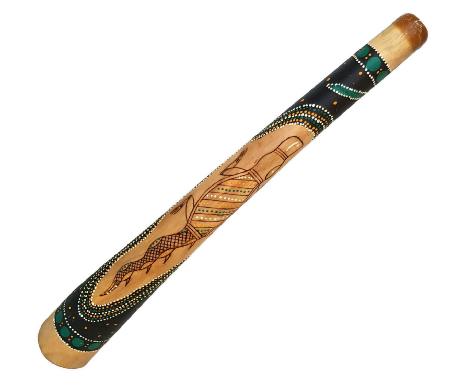Sydney’s Aboriginal Art and Culture – by Suzie W. 2009
The rock paintings and engravings of Sydney reflect the artistic inclinations of the Aboriginal population before the Europeans came to settle in this historical city. Rock engravings and paintings show the close relation the Aborigines had with the sea. The engravings and paintings were mostly about creatures related to the sea such as whales and sharks and other fish. Gwion Gwion is a form of rock painting seen in caves, which is believed to belong to a culture that existed long before the Aboriginal culture as it is known today.
In addition to rock painting, engraving, carving and sculpture, indigenous art also includes painting on leaves, carving on wood, sand painting and artworks on cloths. Body painting is an indigenous art which covers the body with intricate, exquisite patterns. The same art is seen in a varied form in bark painting. Paintings were done traditionally on bark walls and ceilings.
Stone arrangements of large and small stones embedded into the soil are unique to Aboriginal Australian art as well as weaving, jewelery making and crafts made from various forms of fibers.
Other forms of art such as dancing and singing were interlaced with the daily routines of Aboriginal life. The Aboriginal people sang while they performed their daily chores. Aboriginal fishing women sang all day paddling in rhythm with their music.
Bush operas which were traditionally called corroborees were conducted at Bennelong Point where the Sydney Opera House situates today. The operas were usually stories woven around subjects like hunting and fishing and sometimes folk tales themed on human relationships. There are Aboriginal art centers in The Rocks area and at the Sydney Opera House. The Sydney Opera House is also a venue for the Sydney Festival which brings together art from different parts of the world, both modern and classic.
Traditional Aboriginal art faded out since European invasion. However, in the modern times, efforts have been made to protect and preserve the different forms of Aboriginal art. Though there has been a lot of evolution in the methods of creating and presenting the different art forms, the indigenous element has been preserved. Moreover, new art forms have been evolved from Aboriginal art without losing its cultural essence. Traditionally art and artifacts used to be created using organic agents and materials; however artists of the present day are creating traditional art using modern, synthetic materials preserving the cultural flavor.
Indigenous art and culture of Australia, as that of anywhere else, give a great insight into the history, the relationships and the lifestyle of its Aboriginal people. They throw light on their social and religious lives, their politics and economy, and the environment they lived in.
Sydney today celebrates its Aboriginal art and culture through several events and festivals. Today more and more non-Aboriginal people are taking interest in and contributing their efforts to preserving this tradition which is one of the oldest surviving in the world!
Article Source: https://EzineArticles.com/expert/Suzie_W./429277

